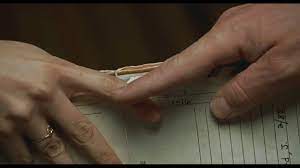There are 6 different Documentary modes: poetic, expository, observational, performative, reflexive, participatory.
Documentary films approach their subject matter in a variety of ways.
“John Grierson’s definition of documentary filmmaking – ‘the creative treatment of actuality’ – summarises its overarching fallacy. The fallacy being that documentaries often purport to reveal truths, however by the very act of documenting actuality, the director inadvertently alters its ‘truth’.” (Arielle Richards)
What Are Documentary Modes?
In 1991, American film critic and theoretician Bill Nichols proposed that there were six different modes of documentary—poetic, expository, reflexive, observational, performative, and participatory—each containing its own specific characteristics. Each mode is a category that can be boiled down to a few specific elements.
*No Place to Hide (2019) Leibovitch is a short expository documentary which provides an insight into the workings of a Michelin Star kitchen.
Expository documentary definition –
Expository documentaries are created with the intent of showcasing the ‘truth’ about a subject. These often showcase some form of omniscient voice-over and one or more interviewee. In expository documentaries, the cinematographer gathers footage to strengthen and support their ‘truth’, including re-enactments, archival footage, historical events and more.
Throughout this doc It features montages throughout, typically showing them at work, cooking. The documentary as a whole was a blend of rythmic and eliptical montages. These montages are quick and short, representing the fast-paced nature of the kitchen environment of a Michelin Star restaurant. These montages are paired with fast-paced percussion music which can be used to evoke feelings of stress within the audience and reflect the atmosphere being shown.
 screenshot. At the end of the movie we also witness a parallel editing example as it is cutting between two scenes
screenshot. At the end of the movie we also witness a parallel editing example as it is cutting between two scenes

